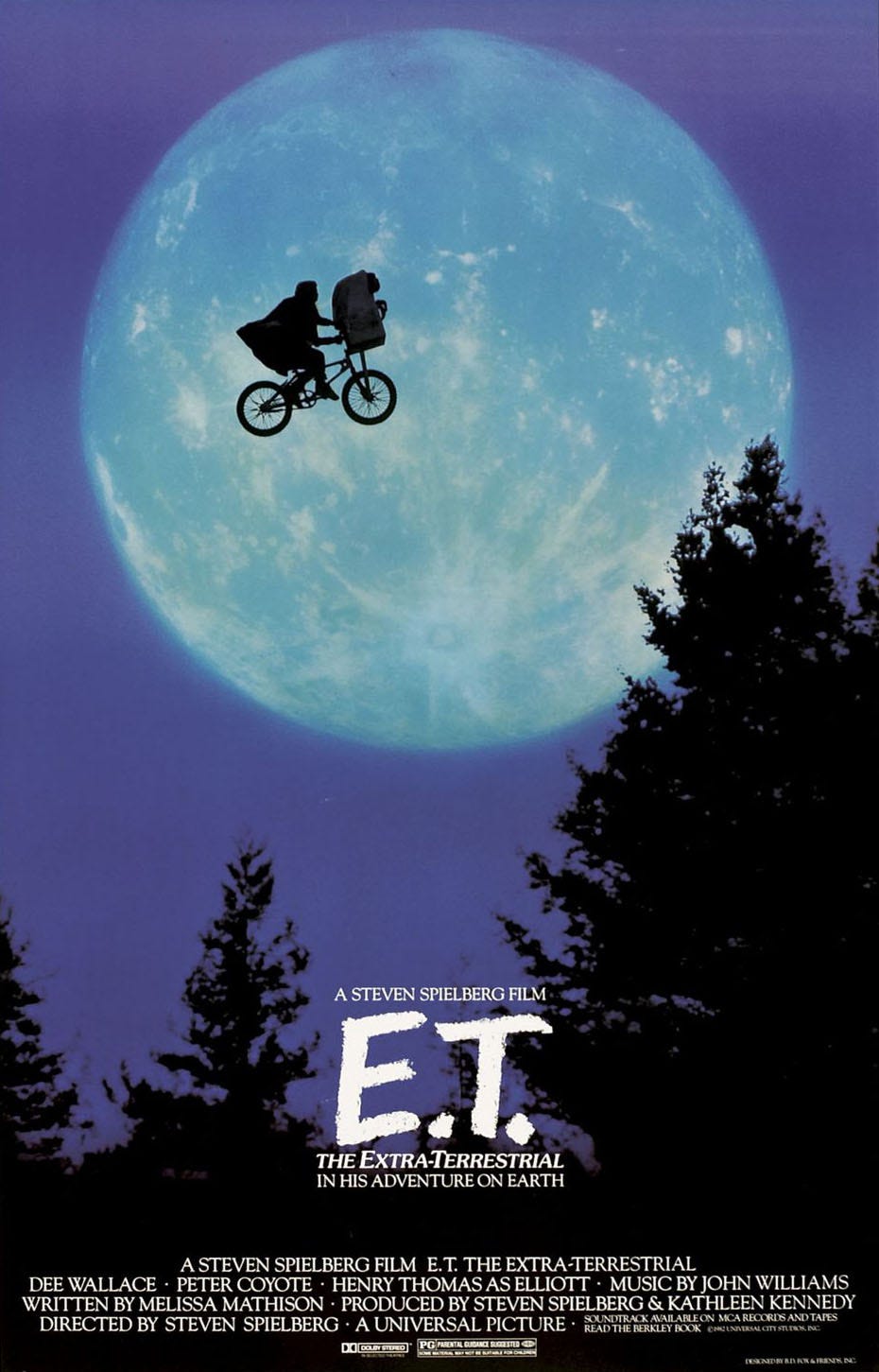E.T. the Extra-Terrestrial (1982) – Dualism
Happy New Year! I hope you’ve all had a thrilling, loving, relaxing, satisfying start to the year! In honour of such good tidings, I thought I’d watch a film I had never seen before (but thought I knew well because of living in society) that seems to be a nostalgic love of many: Steven Spielberg’s E.T. the Extra-Terrestrial (1982). The Review Roulette wheel turned up Dualism as our approach, and I think we’re going to take a reception approach to this rather than a content-driven analysis. By that I mean, I didn’t think it was very good cinema, but I completely understand why it is a beloved children’s film. I’m a bit ill, so this review is also going to be quite casual and also probably more explicit than others.
Let’s take a look at E.T. (which, to be honest, I thought that was the full name of the film until like two minutes ago, so let’s just go with that) from the point of view of two ages both within the film and as audience members.
Kids are living it the fuck up in this film. They’re Goonies-ing it up just catching aliens and saving frogs and being right all the time and not trusting authority figures and being so god damn loud on the school bus like all children in the 80s according to Hollywood. Elliott (Henry Thomas), the main kid with the symbiotic connection to E.T., is like a sweet little cherub just wanting to do good while his world feels as though it’s falling apart with his parents separating and older brother’s friends not including him in their games. Gertie (Drew Barrymore) is so damn cute and a precious addition to the film with her deep empathy for E.T. despite not having a symbiotic connection to him. The kids are alright in this film, and even with the acting – sometimes child acting is not my favourite, but the kids nailed it in this film.
On the flip, the adults are not great. The mom (Dee Wallace) is obviously (and rightly) a bit of a mess in this moment (and totally understandably as it seems her husband just fucked off to Mexico with some chick named Sally and left her with three children?). But beyond her understandable inattention at every moment as she’s processing her own changed role and love life and pain, the other adults are just not well constructed. We have these caricatured scientists from NASA in space suits at one point that are just totally impractical for the task at hand, and we only really see the faces of two adults in the film, not even Elliott’s teacher in the overly long scene of intoxicating frog liberation.
The effect is (whether intended or not) that adults seem bumbling and uninterested in the magic of childhood or children’s perspectives. At one point, Elliott lays out this idea when he tries to convince his sister Gertie that adults can’t see E.T., only children can. While this is an obvious lie and she doesn’t believe him, that sentiment, I think, goes a bit deeper. Adults see him as a research opportunity, they don’t understand him, they pump him full of human drugs and leave a kid in a fully functioning lab just because he asked for a moment alone. They wear hazmat gear sometimes but not always, they don’t secure anything and are easily outsmarted by the children who can see the extraordinary, ironically deeply human qualities of E.T.
Watching the film, I totally get it. It’s a children’s view of the world and made for children and maybe if I had watched it as a child and not as a nearly 30-year-old film analyst, I would have liked it a lot more. I get why the adults are so bumbling and why the kids are so peak for 80s depictions of children as smarter than the adults who voted in Ronald Reagan. I’m with you. I do also think there are a lot of things in this film that are impractical and don’t work very well (unlike the practical effects of E.T. which are fantastic). But I guess, like Elliott says, adults can’t see E.T. for the joy and wonder and magic it might have been for many in their childhoods and that’s something I will happily give way to Elliott (and Spielberg) on.
Because I’m Never Done When I Say I Am
Contemporary History
This film is absolutely brimming with product placement and tie-in opportunities, and I can’t think of anything more 80s Hollywood than that. Product placement in cinema has been around as long as cinema, always hand in hand, but tie-ins with films and brand placement were definitely exponentially greater in the late 70s and early 80s. From attracting E.T. with Reese’s Pieces (and the subsequent Reese’s line with E.T. on the packaging) to the Coors to the design of E.T. as an allegedly cuddly little guy, Spielberg knew what he was doing with E.T. from a financial and marketing perspective – maybe another reason the kids didn’t trust the authority figures! Additionally, the film speaks to the moment subtly with a “No Nukes” t-shirt, Buck Rogers cartoon in the paper, commentary on spooky government surveillance and distrust, and more. It is well-placed in its period both contextually in the content and externally in its production.





This film - in particular the scary hazmat scene with the scientist's arm coming through ... the window? Some blinds? Plastic? looking for E.T. ... scared the *shit* out of me when I was 5.
Anyway, I'm here for Explicit Vaughn (hope you feel better, soon).
Thank you! Low-key I might stay casual and explicit